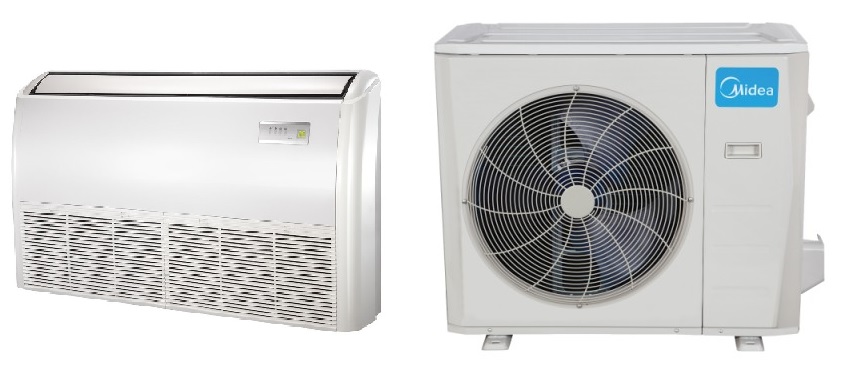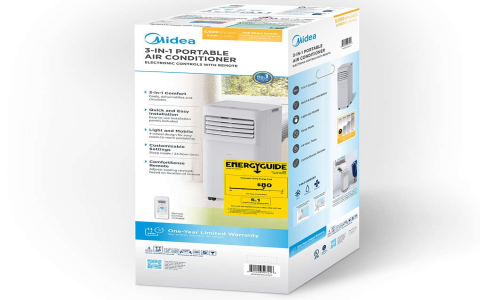In the search for a reliable, quiet, and energy-efficient solution to home heating and cooling, mini split air conditioners have become increasingly popular. Among these, the Midea Mini Split stands out in as a strong option. But does it really live up to the hype? This review takes a close look at its key features, real-world performance, and the pros and cons to help you decide if it’s the right fit for your home.
What Exactly Is a Midea Mini Split?
The Midea mini split system is a ductless climate control unit designed to efficiently heat and cool specific areas in a home or office. Unlike traditional systems that use bulky ductwork, mini splits connect an outdoor compressor directly to one or more indoor air handlers. This setup allows for targeted temperature control in different rooms or zones, boosting comfort and reducing energy waste.
Why Midea Mini Splits Are Worth Considering in 2025
Midea is a well-known HVAC manufacturer that has upgraded its mini split systems to include the latest inverter technology, smart connectivity, and high energy efficiency. Some highlights include:

- Cooling capacity ranging from roughly 2. kW up to 13. kW, making it suitable for everything from small bedrooms to multiple-room setups.
- High efficiency ratings with a SEER (Seasonal Energy Efficiency Ratio) up to 27. and a Heating Seasonal Performance Factor (HSPF) reaching 14.8, which means lower electricity bills.
- Very quiet operation, with indoor unit noise levels as low as 20– decibels, ideal for noise-sensitive spaces like bedrooms or home offices.
Key Features of Midea Mini Splits
1. Advanced Inverter Compressor
Midea employs inverter-driven compressors that adjust their speed to keep the temperature steady, rather than turning fully on and off. This results in quieter operation, greater efficiency, and longer lifespan compared to traditional compressors.
2. Smart Home Integration
Most Midea mini splits can connect to Wi-Fi, enabling control via smartphone apps or virtual assistants such as Alexa and Google Home. Users can create schedules, monitor usage, and get maintenance notifications remotely.
3. Wide Operating Temperature Range
These units are designed to work well in both extreme heat—cooling effectively at temperatures up to 55°C (131°F)—and in cold conditions, heating efficiently down to -20°C (-4°F). This versatility makes them suitable year-round regardless of climate.
4. Quiet and Powerful Performance
Indoor units typically operate at sound levels below dB, making them barely noticeable in quiet environments. Outdoor compressors are also designed to minimize noise, complying with residential noise standards.
5. Environmentally Friendly and Energy Efficient
Midea uses R410A refrigerant, which has no ozone depletion potential and is more efficient than older types. Their systems often come with energy certifications, reflecting their commitment to green technology.
Pros and Cons of Midea Mini Splits
| Pros | Cons |
|---|---|
| Energy-efficient thanks to inverter technology | Installation can be costlier than window AC units |
| Quiet operation suitable for bedrooms and offices | Professional installation is necessary for best results |
| Smart controls with smartphone and voice assistant compatibility | Some users report occasional issues with Wi-Fi connectivity |
| Variety of sizes and wide temperature tolerance | Replacement filters may be more expensive than generic alternatives |
| Effective heating and cooling across climates | The upfront cost might be intimidating for budget-conscious buyers |
Frequently Asked Questions About Midea Mini Splits
Q1: Is the Midea mini split easy to install?
Installation requires a licensed HVAC technician to handle refrigerants and electrical work correctly. While this involves an extra expense, professional setup ensures the system performs efficiently and lasts longer.
Q2: Can a single Midea mini split cool and heat multiple rooms?
Yes, Midea offers multi-zone systems that connect multiple indoor units to one outdoor compressor, allowing customized climate control in up to zones.
Q3: How much energy savings can I expect?

Thanks to high SEER ratings, Midea mini splits typically use 30-40% less electricity compared to traditional HVAC systems, especially useful in homes without ductwork.
Q4: Are these units noisy?
No, the indoor units usually operate at noise levels comparable to a whisper—around to decibels—making them excellent for quiet environments.
Q5: Do Midea mini splits work well in cold weather?
They do. Midea models can efficiently heat spaces even when outdoor temperatures drop to -20°C (-4°F), outperforming some competitors in cold climates.
How Midea Stacks Up Against Competitors in 2025
In the crowded mini split market, Midea offers a solid combination of affordability, features, and reliability.
| Brand | Strengths | Comparison Notes |
|---|---|---|
| Midea | Cost-effective, smart controls, energy efficient | Offers competitive specs at a more accessible price than premium brands |
| Mitsubishi | Premium durability, high-end efficiency | Higher price point but excellent build quality |
| Daikin | Ultra-quiet operation | Midea has more versatile multi-zone options |
| LG | Strong inverter technology | Midea leads on energy savings and maintenance costs |
Tips to Get the Most Out of Your Midea Mini Split
- Pick a unit properly sized for your room to avoid inefficient heating or cooling.
- Clean or replace filters regularly to ensure good airflow and system longevity.
- Take advantage of smart scheduling features to reduce energy use when rooms are empty.
- Improve home insulation to keep conditioned air from escaping.
Final Thoughts
The Midea Mini Split comes across as a compelling choice in today's HVAC market. Its blend of advanced inverter technology, smart home integration, broad temperature range, and quiet operation make it suitable for a variety of homes and climates. While installation costs and occasional connectivity quirks are worth noting, the overall value and energy savings offer a convincing argument for Midea as a smart investment in home comfort.



